Hey, everyone. It’s Josh from Computer Fitness again. We are a Tech Support Company for Small and Medium businesses located in Reisterstown, MD.
As we’ve talked about on one of our other blogs, remote use of a computer is a growing trend in today’s IT world. The article, located here, talks about some of the reasons why using RDC is a great idea. Here at Computer Fitness, we’re going to take a look at how to get this up and running on your home machine.
I’m going to assume that you’re using Windows for this part. Mac OS comes next. First, open up your Start menu. Next, you want to right click on My Computer. Next, click Manage. This will bring up a new screen with a lot of details about your computer. If you are using Windows XP, which a lot you probably are, you’ll see a tab labeled Remote.
On the Remote tab, there are two check boxes. The one you want to check here is under Remote Desktop and labeled “Allow Users to Connect Remotely to this Computer”. This computer can now be accessed remotely. If you want to add users that are allowed to use this privilege, which I recommend, just click the box labeled Select Remote Users. That will keep a tight control on the people using it.
Now, for Mac Users. This is pretty easy. Open up your System Preferences. Now, click on Sharing. Once that loads, you will see a number of options for sharing. Things like File Sharing will likely already enabled. You want to check the box labeled “Remote Management”. Once you do, you will be presented with a list of options for users taking control of the system. This provides granular control over users. This way, even if someone gets into your system, you still have some control if you aren’t there. Check the appropriate boxes and hit okay. As with Windows, you can select certain users to give access.
-Josh
Computer Fitness
Onsite and Remote Tech Support
Tags: computer, control, mac, pc, remote, sharing, tech support, users
Posted in Desktop - Workstation, Mac and PC | No Comments »
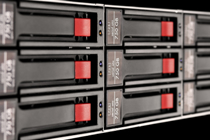 Hello and welcome to Computer Fitness’ Blog! My name is Josh. Computer Fitness is a tech support firm for small and medium businesses in Reisterstown, MD. Our areas of expertise run the gamut from workstation repair to server maintenance. Hello and welcome to Computer Fitness’ Blog! My name is Josh. Computer Fitness is a tech support firm for small and medium businesses in Reisterstown, MD. Our areas of expertise run the gamut from workstation repair to server maintenance.
So you’ve got a Mac and that’s awesome. You like the OS, the feel, whatever. However, you still need to run some Windows apps so you figure you’ll do that natively. It makes sense. So you get your copy of Windows and your Mac OS X disc and begin the process.
Now that you’ve gotten Windows installed, you’ll need to access your Mac side unless you want to waste precious disk space. The best part is, you can do this. First, make sure you have the latest version of Boot Camp for Windows. It comes from the OS X disc and is also available online from Apple. Once you install it, you can get read-only access to your OS X side! However, let’s say you have an external drive.
If you have an external drive, you will likely want to share files. To do this, you will need to format the drive. In Windows, view the drive in My Computer and right click on it. Now, format it in FAT format. This stands for File Allocation Table format. This is the only format that both Windows and MAC can read/write to.
Lastly, if you want to use part of your external as a Time Machine drive and the other half for Windows, you can do that, too. Open up Disk Utility in Mac OS X and select the drive you want to partition. Then, drag the slider on the left to indicate how you want it split. Now, you can partition the drive. Next, format one part as Mac OS X Journaled and the other as FAT. You can now use an external drive as two different drives!
-Josh
Computer Fitness
Onsite and Remote Tech Support
Tags: Apple, Formatting, HDD, Windows
Posted in Mac and PC | No Comments »
 Hello and welcome to Computer Fitness’ Blog! My name is Josh. Computer Fitness is a tech support firm for small and medium businesses in Reisterstown, MD. Our areas of expertise run the gamut from workstation repair to server maintenance. Hello and welcome to Computer Fitness’ Blog! My name is Josh. Computer Fitness is a tech support firm for small and medium businesses in Reisterstown, MD. Our areas of expertise run the gamut from workstation repair to server maintenance.
You’re a businessperson on the go. You travel from place to place to place and therefore live on your laptop and wireless device. You’ve got yourself a laptop and that is a great start. As someone who’s lived through mobile devices for a while, I have some suggestions on travel/laptop accessories for all you travelers.
Bluetooth Mouse
Let’s be honest, most trackpads aren’t up to the challenge of letting you get work done. While there are a few that can make life a little easier, your best bet is to get a Bluetooth mouse to meet your pointer needs. While you could opt for a standard 2.4GHz wireless mouse, the downside there is usually the massive USB dongle you have to plug into your laptop. That makes space a bigger issue. Also, you lose a USB port. However, most modern laptops have Bluetooth built-in. If, for some reason, you don’t have Bluetooth in your laptop, the adapters are so small you barely notice them. Bluetooth devices are a win here.
Lap Desk
This might seem like something you don’t really need, but have you ever really let a laptop sit on your lap for an extended period of time? They tend to get pretty hot, especially if you are doing a lot of processor intensive computing. A lap desk will keep you from burning your legs with your laptop. Plus, you can use the extra space to use your wireless mouse. These are incredibly handy if you’re traveling on a train, etc. for a long amount of time.… Read the rest
Tags: Accessories, Laptop, Mobile, Office, Tips
Posted in Business Travel Tips | 2 Comments »
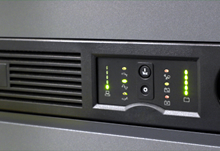 Hello and welcome to Computer Fitness’ Blog! My name is Josh. Computer Fitness is a tech support firm for small and medium businesses in Reisterstown, MD. Our areas of expertise run the gamut from workstation repair to server maintenance. Hello and welcome to Computer Fitness’ Blog! My name is Josh. Computer Fitness is a tech support firm for small and medium businesses in Reisterstown, MD. Our areas of expertise run the gamut from workstation repair to server maintenance.
Let me begin by explaining what a UPS is. First, it has nothing to do with the shipping company. A UPS, in computing terms, stands for Uninterruptible Power Supply. Essentially, this is a battery backup for your electronic devices. You may not think you need one of these, but here are some reasons why you actually do.
First, just from a personal computing level, a UPS will keep your PC from suffering damage if the power goes out. The big concern here is the hard drive. When you access data on a hard drive, there are plates on the inside that spin. If your computer gets shut down suddenly, the plates, which are read by a needle of sorts, can become scratched. If that happens, kiss your hard drive goodbye.
Second, a UPS can keep your network infrastructure from suffering damage. When the power goes out, things like backups and programs that run over your company’s LAN could get wiped out. They may not get deleted, but the loss of data could be devastating. You won’t have time to save progress at all. Therefore, having a UPS for vital systems is very important.
Lastly, a UPS will keep you from suffering electrical surges. Any good UPS will make sure to have surge protection in there. Sometimes, they even come with a warranty for technology attached to them. The damage you might sustain from a power surge could cost thousands upon thousands of dollars in damage. A simple preparatory step can save a lot of headaches later.
Popular UPS Manufacturers:
APC, Belkin, CyberPower, Tripp Lite, Ultra
That’s all for this week. Come back next week for more computer fitness tips!
-Josh
Computer Fitness
Onsite and Remote Tech Support
Tags: computer, power, supply, uninterruptible, Uninterruptible Power Supply, ups
Posted in Fault Tolerance, Uninterruptible Power Supply | No Comments »
 Hello and welcome to Computer Fitness’ Blog! My name is Josh. Computer Fitness is a tech support firm for small and medium businesses in Reisterstown, MD. Our areas of expertise run the gamut from workstation repair to server maintenance. Hello and welcome to Computer Fitness’ Blog! My name is Josh. Computer Fitness is a tech support firm for small and medium businesses in Reisterstown, MD. Our areas of expertise run the gamut from workstation repair to server maintenance.
If you’re looking to get a new hard drive or computer, one of the first things you’ll likely look at is the size of the drive. You’ll try to figure out how much space you use now and how much you think you’ll use in the future. All of that is great, but a growing option for the hard drive is now the choice of a traditional drive, which utilizes spinning plates to hold data, or a solid state drive, which is very similar to the memory cards used in cameras, iPods, etc. This may not seem important at first, aside from the price. However, take a close look at three things to consider when buying a new hard drive.
1) Solid State Drives Have No Moving Parts
This is a winner for all you laptop owners out there who keep dropping your machine. Since there are no moving parts, falling won’t damage any delicate equipment located on the inside of the drive. A traditional drive might crash if dropped. Solid State drives win here. However, if you are getting a desktop, don’t even worry about this part.
2) Traditional Hard Drives Last Longer
Not too long ago, solid-state drives were said to have a lifespan of about two years. They’ve doubled that since then, but the fact of the matter is that a traditional drive was last longer. If you’re a techie who is always upgrading, this may not be a concern for you. However, it is something to consider.
3) Solid State Drives are VERY Expensive
If it just comes down to money for you, a solid-state drive is not your choice. They are much more expensive. This is… Read the rest
Tags: hard drive, Hardware, HDD, Solid State Drive, SSD
Posted in Hardware Overview | No Comments »
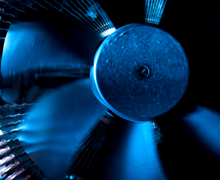 Hello and welcome to Computer Fitness’ Blog! My name is Josh. You may know me from the Internet Beacon. We have a pretty cool blog over there. If you’re new to our sites, do check it out; there’s plenty more awesome over there. Computer Fitness is a tech support firm in Finksburg, MD. Our areas of expertise run the gamut from workstation repair to server maintenance. Hello and welcome to Computer Fitness’ Blog! My name is Josh. You may know me from the Internet Beacon. We have a pretty cool blog over there. If you’re new to our sites, do check it out; there’s plenty more awesome over there. Computer Fitness is a tech support firm in Finksburg, MD. Our areas of expertise run the gamut from workstation repair to server maintenance.
For the most part, we all take pretty good care of our computers. We make sure the screens are free of spots, sometimes wipe down the keyboard and mouse, and generally make sure we don’t spill coffee in that cup holder thing that comes out of it. However, there may be a vital area you are missing in your attempts to keep your system clean: the inside. I know what you’re thinking, “Why would the inside of my computer be dirty? It’s not like I open it.” Well, that’s a logical assumption. However, it’s incorrect.
The best way to keep your computer cool while it’s working hard while you’re working hard…or playing games on your desk…is through fans strategically placed on the case. They are located at different places on most laptops, but desktops are our focus today. As with all fans, they exchange air at a rapid rate to keep things cool. Because of this, dust builds up. And unbeknownst to you, inside of your computer case could be the secret location of every dust bunny ever conceived by human clutter. Fear not, you can prevent this.
Opening your PC case is not something I recommend if you have an IT department or even an IT guy/gal at your work. They will not want you opening your case for a myriad of reasons. This is for your home PC. If you have permission from your IT people, then feel free to do this at work, too. However, please don’t assume you can open… Read the rest
Tags: case, computer, inside, pc, pc case
Posted in Desktop - Workstation, Hardware Overview | No Comments »
Hello and welcome to Computer Fitness’ Blog! My name is Josh. You may know me from the Internet Beacon. We have a pretty cool blog over there. If you’re new to our sites, do check it out; there’s plenty more awesome over there. Computer Fitness is a tech support firm in Finksburg, MD. Our areas of expertise run the gamut from workstation repair to server maintenance.
Windows 7 is, in my opinion, the best Microsoft OS (operating system) yet. While it may look similar to Vista in some respects, the functionality and overall operability of Windows 7 is miles ahead of its forerunners. Given that all new machines are shipping with Windows 7, I though it appropriate to go over some neat tips and tricks for the OS. Some are cosmetic and some are functional.
Resizing Windows
I know the ability to change the size of a window to your liking is nothing new. In fact, it’s been around since, I believe, Windows 3.1. However, Microsoft introduced a rather cool new feature that automatically resizes them for you with either a mouse gesture or a keyboard shortcut. With this feature, you can either drag the window you want resized to a side of the screen or you can press the Windows key and the direction you want it go. By doing this, the window will take up whatever half of the screen it’s been sent to, allowing you to manage your desktop space even better than before!
Program Stacking in the Task Bar
It’s no secret that those of us who run a lot of programs on our PCs have our task bar filled up pretty quickly. Before you know it, it’s cluttered with a thousand and one Internet Explorer windows and you can never remember which one has what you really want on it. To remedy this, Microsoft changed the task bar. Now, instead of seeing a rectangle with… Read the rest
Tags: computer, microsoft, task bar, tech support, Windows, Windows 7
Posted in Desktop - Workstation | No Comments »
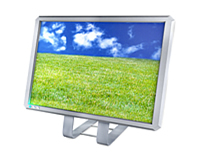 Hello and welcome to Computer Fitness’ Blog! My name is Josh. You may know me from the Internet Beacon. We have a pretty cool blog over there. If you’re new to our sites, do check it out; there’s plenty more awesome over there. Computer Fitness is a tech support firm in Finksburg, MD. Our areas of expertise run the gamut from desktop repair to server maintenance. Hello and welcome to Computer Fitness’ Blog! My name is Josh. You may know me from the Internet Beacon. We have a pretty cool blog over there. If you’re new to our sites, do check it out; there’s plenty more awesome over there. Computer Fitness is a tech support firm in Finksburg, MD. Our areas of expertise run the gamut from desktop repair to server maintenance.
Let me begin with this, playing around in the registry is a terrible idea if you don’t know what you’re doing. You can do an incredible amount of damage to your system, perhaps irrevocably damaging it, if you start making changes here. Now that the warning is out of the way, let me give you a brief rundown of what the Registry does.
The registry is a part of the Windows operating system in which files and system settings are stored in a list. Some of the settings are edited with Control Panel. This is to prevent you from having to dig around in the Registry to change the simple things. However, they are all tied into the Registry.
The registry is formulated as a tree, so there are items are expandable to get to more settings. In this sense it is granular. You can get to very specific items. However, this also means navigating through this item can be tricky. Again, messing around in here is not something to do unless you have a great understanding of what can be done here.
The reason I bring this up is because sometimes viruses and malware will create items in here. Because of this, it is important to make sure that whatever anti-virus software you use will need to scan the registry. The software will do this for you, so there’s no need to get into this one your own. For those more in the know, here is a link to some tips from Microsoft.
That’s all for this week. Come back again for more Computer Fitness tips.
-Josh
Computer Fitness
Onsite and Remote Tech Support
Tags: Antivirus, microsoft, Registry, User Beware, Windows
Posted in Desktop - Workstation | No Comments »
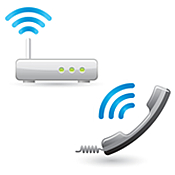 Hello and welcome to Computer Fitness’ Blog! My name is Josh. You may know me from the Internet Beacon. We have a pretty cool blog over there. If you’re new to our sites, do check it out; there’s plenty more awesome over there. Computer Fitness is a tech support firm in Finksburg, MD. Our areas of expertise run the gamut from desktop repair to server maintenance. Hello and welcome to Computer Fitness’ Blog! My name is Josh. You may know me from the Internet Beacon. We have a pretty cool blog over there. If you’re new to our sites, do check it out; there’s plenty more awesome over there. Computer Fitness is a tech support firm in Finksburg, MD. Our areas of expertise run the gamut from desktop repair to server maintenance.
Certainly a wireless world makes things a lot easier. Think about all the wireless technology you own. It could be a lot or just a cordless phone for your landline. If it’s just the phone, maybe grab some new stuff. That’s just me. We tech folks tend to push for the latest and greatest. However, there are times when you need to carefully consider which technologies you employ.
In this case, wireless technologies often operates on the same frequency. That frequency is the 2.4ghz range. This frequency is the standard for wireless devices and, as such, can be a bit problematic on occasion. Think about your cordless phone, wireless router (Wireless A/B/G 802.11), wireless mouse, etc. all talking on the same line. It can be troublesome.
The best way to avoid this is to make sure there is enough space between the devices. I know this may sound like a simple solution, but it has proven to be the best one. For example, many people have their desktop computers right next to their routers. Not everyone, but a lot. If you have a wireless mouse broadcasting on the same frequency as the router, you may notice your mouse being a bit jumpy or unresponsive at random times. This is because two different data streams are broadcasting on the same frequency in close proximity. In this case, it might be best to just switch to a wired mouse. This is just one example of a potentially problematic interaction.
In the… Read the rest
Tags: Hardware, Peripherals, WiFi, Wireless
Posted in Hardware Overview | 3 Comments »
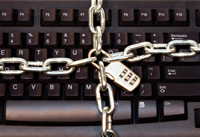 Hello and welcome to Computer Fitness’ Blog! My name is Josh. You may know me from the Internet Beacon. We have a pretty cool blog over there. If you’re new to our sites, do check it out; there’s plenty more awesome over there. Computer Fitness is a tech support firm in Finksburg, MD. Our areas of expertise run the gamut from desktop repair to server maintenance. Hello and welcome to Computer Fitness’ Blog! My name is Josh. You may know me from the Internet Beacon. We have a pretty cool blog over there. If you’re new to our sites, do check it out; there’s plenty more awesome over there. Computer Fitness is a tech support firm in Finksburg, MD. Our areas of expertise run the gamut from desktop repair to server maintenance.
Windows User Account Control, or UAC, was introduced in Windows Vista as a way to make the Windows OS more secure. There are a lot of arguments as to whether or not this is true, but the fact remains that it is a part of Windows. Today, let’s examine some of the Pros and Cons of using UAC.
Pro – UAC Prevents Unauthorized Installations and Changes to Your System
UAC does its job here. It will keep changes from happening to your system without your express permission. This includes changing settings on your machine as well as installing software. This is incredibly handy, as a lot of malware gets around computers this way.
Pro – Adjustable Levels of Access
UAC allows you to set varying levels of warning for your computer. This comes in handy if you are always installing new programs or making changes to your PC. You can custom tailor notifications from the UAC in the Control Panel.
Cons – UAC Can Be Intrusive
One of the biggest complaints that users have about UAC is that it can be incredibly intrusive. This was more of a complaint in Windows Vista, but it is valid. Most people don’t know how to change the settings that control UAC, so getting a notification every time you want to do a lot of things on your PC can be very frustrating.
Cons – Too Specific
UAC’s biggest flaw is that it is too granular. The specificity that UAC applies to computer management is more of a hassle than… Read the rest
Tags: Information Security, Tips, UAC, Windows
Posted in Desktop - Workstation | 1 Comment »
|















